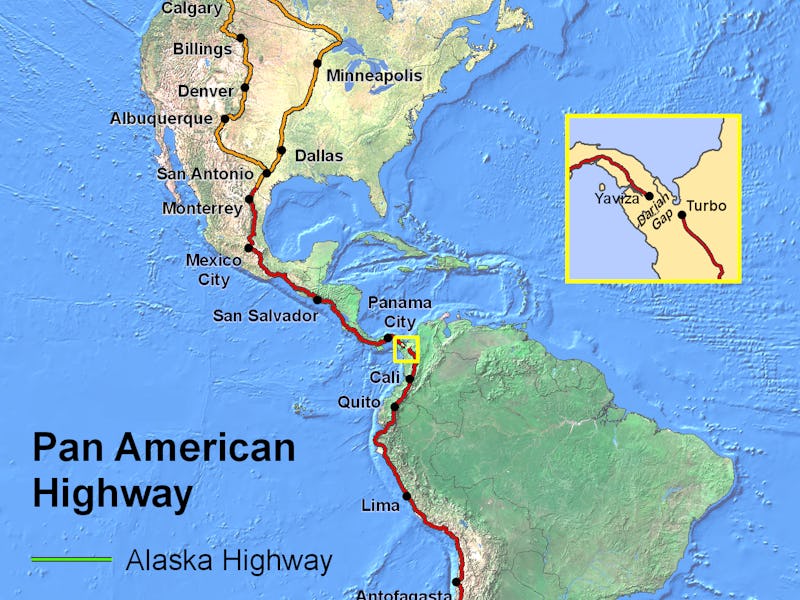Considering a road trip, but want to do something a little more … extreme? The Pan-American Highway, the longest road in the world, spans 30,000 km (around 18,600 miles) and crosses 17 countries. The route, conceived in 1923, was built in various parts by different countries, with Mexico financing its section and the U.S. assisting with some of the central American sections.
Stretching from Prudhoe Bay, Alaska to Ushuaia, Argentina, the route’s international construction means there is slight disagreement over where the road actually goes. For example, the United States has declared every single interstate highway part of the route, while Canada has not declared any road part of the route. Those who have attempted the trip describe an incredible journey: author Tim Cahill traveled from Tierra del Fuego to Prudhoe Bay, mostly following the route, and the trip spanned a staggering 24 days filled with mechanical failures, extreme weather, impressive sights, and lots of mood swings.
The route is not for the faint of heart, and one part in particular places it in the realm of expert-level trips. The 50 mile Darien Gap, located on the Panama-Colombia border, is the only part of the route that is incomplete. A harsh landscape consisting mostly of tropical forest and swampland, the gap has a fascinating history of nations that have attempted to conquer its difficult terrain.
A colonization attempt by the Spanish in 1510 ended with indigenous tribes setting fire to the settlements. In 1698, Scotland also tried to establish a colony. The idea was that controlling a key trading route between north and south America would bring great riches to the kingdom. The Darien scheme led to the opposite: disease and attacks forced the Scots to abandon the colony two years later, and because the nation had poured so much capital into the scheme, its failure pushed Scotland into signing the Act of Union with England in 1707. “It’s a very early example of a huge corporate cock-up,” Douglas Watt, author of a book about the scheme, told Reuters.
Some people have managed to cross the gap in a car. In 1960, a Land Rover became the first car to cross the gap, but it took around five months at a speed of around 200 meters per hour.
Today, the most practical way to bridge the gap is to travel by sea. Conservationists argue that the road shouldn’t be completed anyway, as it would damage the local ecosystem. The Pan-American Highway stands as a monument to how humans, despite their best efforts, can’t always build infrastructure wherever they feel like.
